READABILITY OF FIRMS DISCLOSURE AND COST OF EQUITY CAPITAL: AN EMPIRICAL STUDY OF CHINESE LISTED COMPANIES
Abstract
We investigated the association between the readability of annual report and the cost of equity capital (COE). This study focuses on the relationship between the readability of annual reports and the cost of equity capital. The expectation of the hypothesis is that there is a negative association between the readability of an annual report and the COE. This negative association implies that a better readability (lower FOG index) leads to a lower COE. This thesis provides evidence that a higher FOG index leads to increase in COE, which means less readable and understandable annual reports. This is consistent with our expectations. The coefficient is very high, however, and this relationship is significant.
INTRODUCTION
The research on the impact of information disclosure on the cost of equity capital of the company has very profound implications for listed companies and regulators. However, the link between disclosure level and cost of equity capital is often unclear, especially in developing countries. In this chapter we will discuss another issue that relates to, first, the research on the relationship between the readability of annual report and the cost of capital. Through empirical tests, this paper proves that high readability of financial reports can indeed reduce the cost of corporate equity capital, which provides an intrinsic motivation for enterprises to disclose relevant information.
Literature review
High concentration of equity will have a certain impact on the operation of listed companies. On the one hand, when the equity is highly concentrated, the listed company is usually controlled by the controlling shareholder. At this time, there exists both the benefits convergence effect and the effect of profit appropriation between the major shareholder and the small shareholder, and the shareholder and the company management also exist. On the issue of entrusted agency, shareholders as principals tend to increase their supervision over management to achieve the goal of reducing the company’s cost of equity capital. However, due to the existence of regulatory costs, dispersed minority shareholders are unable to profit from costly supervision and have the benefit of ownership. Large shareholders with more shares can obtain greater benefits from supervision than small shareholders (Shleifer & Vishny, 1997). On the other hand, the real supervisory function of the company is generally the company's major shareholder. Therefore, the major of shareholders has a higher degree of participation in the company's operations management process and have more corporate information, so that it has to increase itself by increasing the cost of equity capital. The tendency and approach of interest.
For investors, the cost of capital is the minimum required rate of return, which is proportional to the level of risk in the investment project. For enterprises with the high readability of information disclosure, investors are also more likely to obtain information on their operations, finances, etc. This information helps managers and investors identify the readability of investment projects, and thus investors’ future returns on such enterprises. The uncertainty is low and the expected risk is small. Since the required rate of return required by investors is proportional to the predicted level of risk, rational investors require a lower cost of capital for companies with the higher readability of information disclosure than those with the lower readability of information disclosure. That is to say, companies with the higher readability of information disclosure will face lower capital costs. Compared with financial information, non-financial information, as an important part of voluntary information disclosure, contains a large amount of information on internal operations and future development prospects.
(Botosan, 1997; Botosan & Plumlee, 2002) provided the first direct evidence of a negative correlation between firm transparency and the cost of capital; (Welker, 1995) found that there is a clear negative correlation between the company's financial disclosure level and the company's bid-ask spread and cost of debt capital Relationship, which further demonstrates that the lower the bid-ask spread in the securities market is, the smaller the information asymmetry in capital cost is. In (Sengupta, 1998), the disclosure also helps to reduce the cost of issuing bonds. (Healy, Hutton, & Palepu, 1999) suggested that the continuous and stable increase of the disclosure level of a company helps to improve the liquidity and credit level of the company's stock.
However, the degree of proprietary and competitive information of listed companies in different industries is different, and the level of information disclosure may have different effects on the capital costs of listed companies.
Theoretical analysis and hypotheses
In the capital market, capital cost is the required rate of return required by the company's investors. If the company’s return on investment exceeds the requirements of the investor, it will attract more investors to purchase the company's stock, and the stock price will rise. Shareholder wealth will increase. For investors, the required rate of return required by the investor is related to the company's risk level. If the company's operating risk, financial risk, etc. are higher than other companies, the investor's uncertainty about the future of the company will increase. Investors have also increased their required rate of return for their requirements. From the company's point of view, increasing information disclosure is a measure to reduce the investor's risk premium.
This put forward the research hypothesis:
H: The higher the readability of non-financial information disclosure, the lower the cost of equity capital.
Model specification and variables definition
According to the above discussion, due to the information asymmetry between internal operators and external investors, rational investors will require higher investment returns based on expected risks and liquidity. As a result, the cost of equity capital required by enterprises will increase. Moreover, improving corporate transparency will also help improve the corporate governance structure and increase operating efficiency. This reduces business costs. This article expects a significant negative correlation between the two and proposes hypotheses. Based on the assumptions, multiple regression analysis is used to establish the model. Hypothesis 1 and Hypothesis 2 use the same model as follows:
The dependent variable in this paper is the cost of equity capital, which is expressed in terms of COE. Based on this, this paper selects the PEG model as an estimation model for the cost of equity capital. The PEG model first proposed by (Easton, 2004) to measure the cost of equity capital. The specific calculation method is shown in the equation below:
Where is rPEG represents the cost of equity capital calculated according to the PEG model; EPS2 represents the forecast of earnings per share after two years based on the current period; EPS1 represents the forecast of earnings per share after one year based on the current period, and P0 represents stocks of the current period. price. The PEG model requires EPS2≥EPS1.
Research Method
This paper chooses the annual reports of Shenzhen Stocks Exchange listed companies as the research sample, in which the assets and liabilities, the income statement and other data files are from the "CSMAR database”, and the annual reports will be downloaded from CNINFO website. For this purpose, I will make some adjustments to the financial reports and change the format of the files, and then extracting the words from the text using some of the codes used by Python. After modifying the documents and converting the PDF files to text files, the next step is to convert the qualitative data to quantitative data to facilitate statistical analysis. In the statistical analysis we use several tests to achieve the objective assigned to it, see Table 1-2.
Descriptive statistics of Readability and cost of equity capital
Table 6-2 shows the descriptive statistics for major variables. It can be seen that the mean of the cost of equity capital calculated according to the PEG model is 0.0580, with a standard deviation of 0.0188, the minimum value is 0.0189, and the maximum value is 0.128. The mean of fog index is 14.31, the median was 21.87,
Correlation analysis of Readability and cost of equity capital
Before the regression analysis, firstly, in this section analyses the correlation between variables, and makes a preliminary understanding of the relationship between annual report readability (Fog Index) and cost of equity capital. As can be seen from Table 6-3, the correlation coefficient between the fog index of the sample companies and the cost of equity capital is positive (increase in Fog index low readability), with a coefficient of 0.139**, which proves that there is a negative correlation between the readability and COE. The increase in the level of annual report readability can reduce the cost of equity capital, which is consistent with the previous expectations of this paper. The maximum coefficient between each variable is 0. 560, other coefficients are less than 0.5, indicating that there is no serious multicollinearity problem among the variables, that is, regression analysis can be performed on this model. Table 6- 1 Correlation Analysis of cost of equity capital and readability.
Empirical results
As shown in the regression results in Table 6-4, The regression coefficients show that the Fog index and length are significantly positively with cost of equity capital (the readability of annual report is significantly negatively correlated with the cost of equity capital), and the regression coefficient is respectively 0.0210 at level 1% and 0.00340 at level 5%. That is to say, the non-financial information disclosure of a company can significantly reduce the cost of equity capital of the company, which proves the hypothesis 3. The regression results of various coefficients show that the company size is significantly negative with cost of equity capital which means that more readability in the big companies reduce the cost of the capital more than the small size companies. Consistent with this, it shows that the cost of corporate equity capital with high profitability is not necessarily low.
Table 6-4 is the result of the multiple regression when the readability of the annual report is measured by Fog index and length of the report. It can be seen that the readability of the annual reports measured by the two methods is significantly negatively correlated with the cost of equity capital calculated based on which fully demonstrates that the more annual reports readable can reduce the risk level and uncertainty of the investor to the enterprise. The expectation, thus obtaining a lower cost of equity capital, is consistent with the aforementioned analysis based on the cost of ex post equity capital, assuming that H3 is verified and supported. In addition, from the regression results in Table 6-4, it can be seen that the cost of equity capital is relatively reduced with large size of companies, which is consistent with the research of ( Zeng Ying & Lu Zhengfei, 2006), ( Yu Lisheng & Wang Yanyan, 2007), ( Ye Chengang, Wang Wei, Wu Jianfeng, & Li Hui, 2015).
Alternative analysis and model specifications.
In this section, we run a regression of sensitivity tests to examine whether our main evidence in Table 6-4 that readability of annual reports decreases the cost of equity capital is robust to alternative analysis and model specifications, and endogeneity, among other sensitivity checks. Overall, the results from these sensitivity tests reported in Tables 6–5 are not materially different from those of the main analysis.
Where, eps1 and eps2 are calculated using the average of the forecast values of each securities analyst institution in the CISMAR Database; P0 represents the closing price of the stock, dps1 is the forecasted dividend per share for the first year. Dps1 = eps1×k,k represents the dividend payment rate.
In this section we design a model based on OLS regression test. The results are shownthe OJ model that was proposed by (Ohlson, 1995) , due to the relatively small amount of prediction data and artificial estimates that need to be used, is therefore simple to calculate. It has been widely used in the theoretical and practical worlds and has been widely used since then. Considering the accuracy of model estimation and the operability of data collection, this paper uses the OJ model to measure the cost of equity capital. The formula is as follows:
in Table 6-5. the higher the readability of information disclosure, the lower the cost of equity capital of the company. The significance levels of this effect are 5%. Hypothesis 4 is validated and further clarified that the overall increase in financial reporting transparency has a significant impact on reducing the cost of equity capital.
Being underestimated, making the accuracy of the estimator exaggerated falsely, affecting the robustness of the research conclusions, and at the same time solving the problem of missing variables that do not change with time and individuals, this paper also adopts a bidirectional fixed effect model of panel data (both considering individual fixed effects, again considering the time-fixing effect) performed a regression as a supplement and verification. The panel fixed effect regression results are shown in Table 6-5. It can be seen that the cost of equity capital calculated based on the OJN model is still significantly positively correlated with the Fog index and length, which means that high fog index (low readable) increase the cost of capital and when the annual reports longer will increase the cost of the capital. This shows that the company's active commitment to annual report readability can reduce the cost of equity capital, and the aforementioned mixed regression results are robust.
Endogeneity analysis
According to econometrics, variable metric errors and missing important variables will cause the explanatory variables in the model to be related to stochastic disturbance terms (εi), generate endogenous problems, and affect the robustness of the research conclusions. In this section we use instrumental variables trying to mitigate endogeneity. The method was tested for robustness to increase the validity of the conclusion.
Due to the complexity of the cost of equity capital, it is difficult to include all the influencing factors in the aforementioned model. The important missing variables are an important factor that leads to the endogeneity problems in this study. In addition, higher cost of equity capital would encourage companies to adopt a more readability. Therefore, the cost of equity capital may also affect the performance of companies, leading to a link between readability and cost of equity capital. Therefore, the commonly used instrumental variable test method is two-stage least squares (2SLS). 2SLS is the most efficient under the assumption of spherical disturbance. Considering that the data in this paper is short panel data, there may be some time-series autocorrelation problems in the disturbance items, and 2SLS method is selected for the instrumental variable test method. The instrumental variable test results are shown in Table 6-6.
From Table 6-6, we can see that the first stage is based on the regression analysis of Fog index as a dependant variable and Fog_industry and Fog_location as the explanatory variables. The results show that the instrumental variables (IV) and Fog significantly positive correlation, which means low readable annual report will increase the cost of equity capital; the second phase is based on the cost of equity capital as the response variable, and the predicted value of Fog index (FI_predict) obtained in the first phase as the explanatory variable. As a result of the regression, the regression results of the two-stage model the 2SLS model indicate that the firm's capital costs rpeg are significantly positively correlated with the FI_predict (which means significantly negative with annual report readability), which fully accounts for the endogenous nature of missing variables and congruence. Therefore, the annual report readability is still significantly negatively correlated with the cost of equity capital. The test results of instrumental variables are consistent with the aforementioned conclusions.
CONCLUSION
However, the above studies were conducted in the environment of the securities market in developed countries, and whether the results were established in the securities market of a developing country remains to be further tested. Specifically, in China's stock market, does disclosure have the same impact on reducing the cost of equity capital? The answer to the question does not seem obvious. On the one hand, if the low transparency company's securities are an important part of the portfolio of investors' holdings, then the investor's predicted risk will be non-dispersible (Clarkson et al, 1996). Compared with the securities market in developed countries, it is clear that the quality of accounting information disclosure in China's securities market is lower, which indicates that the proportion of low-transparency corporate securities in the securities portfolio held by investors is relatively higher, which makes investors more difficult to disperse. Predict risk. Therefore, the marginal benefit of lowering the cost of equity capital by improving the quality of information disclosure in China's securities market may be greater than that of developed countries. On the other hand, due to the backwardness of the investor protection system in China's securities market, the truthfulness and timeliness of information disclosure are greatly affected.
Suspect, therefore, investors may not care about the expected information about the company's future value, thereby weakening the impact of disclosure on reducing the company's equity capital costs.
Acknowledgment
I would like to thank all the authors of the treatises I have cited or referred to in my paper.




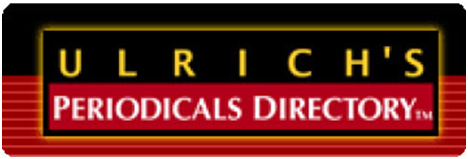




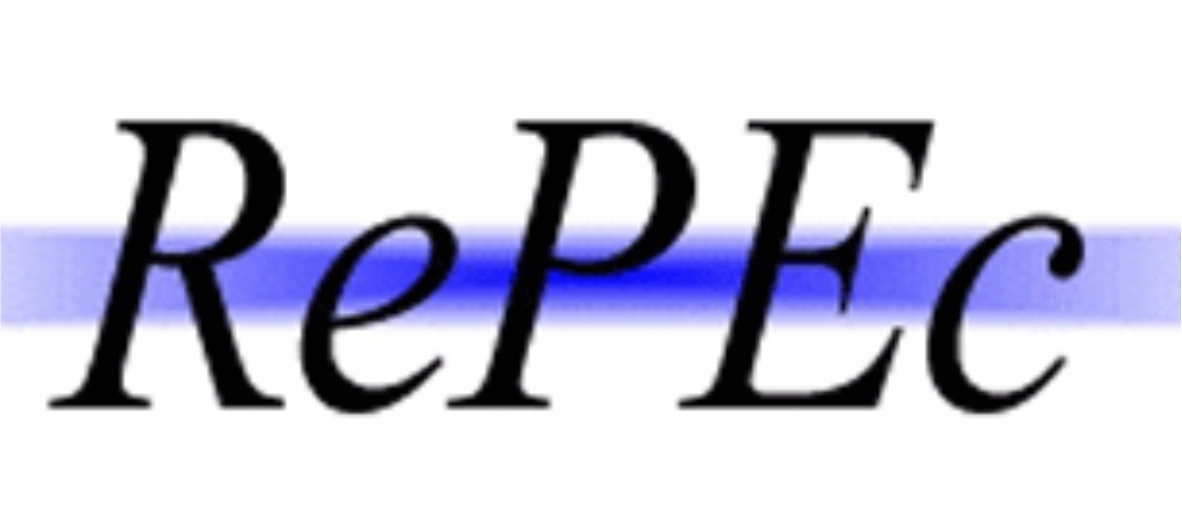

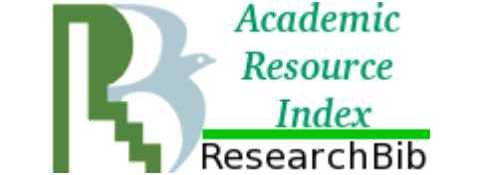

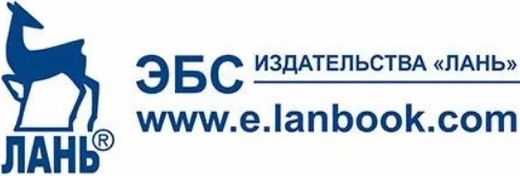
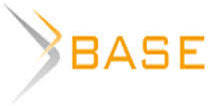


Reference lists
1. Botosan, C. A. (1997). Disclosure Level and the Cost of Equity Capital. The Accounting Review. American Accounting Association. https://doi.org/10.2307/248475
2. Botosan, C. A., & Plumlee, M. A. (2002). A Re-examination of Disclosure Level and the Expected Cost of Equity Capital. Journal of Accounting Research, 40(1), 21–40. https://doi.org/10.1111/1475-679X.00037
3. Easton, P. D. (2004). PE Ratios, PEG Ratios, and Estimating the Implied Expected Rate of Return on Equity Capital. The Accounting Review, 79(1), 73–95. https://doi.org/10.2308/accr.2004.79.1.73
4. Healy, P. M., Hutton, A. P., & Palepu, K. G. (1999). Stock Performance and Intermediation Changes Surrounding Sustained Increases in Disclosure. Contemporary Accounting Research, 16(3), 485–520. https://doi.org/10.1111/j.1911-3846.1999.tb00592.x
5. Li Sheng, & Wang Yanyan. (2007). Information risk and market pricing. Management World, 2. Retrieved from http://www.cqvip.com/qk/95499x/200702/23832794.html
6. Ohlson, J. (1995). Earnings, book-values, and dividends in equity valuation. Contemporary Accounting Research, 11(2), 661–687. https://doi.org/10.1111/j.1911-3846.1995.tb00461.x
7. Sengupta, P. (1998). Corporate Disclosure Quality and the Cost of Debt. The Accounting Review. American Accounting Association. https://doi.org/10.2307/248186
8. Shleifer, A., & Vishny, R. (1997). A survey of corporate governance. The Journal of Finance. Retrieved from http://onlinelibrary.wiley.com/doi/10.1111/j.1540-6261.1997.tb04820.x/full
9. Welker, M. (1995). Disclosure Policy, Information Asymmetry, and Liquidity in Equity Markets. Contemporary Accounting Research, 11(2), 801–827. https://doi.org/10.1111/j.1911-3846.1995.tb00467.x
10. Ye Chengang, Wang Wei, Wu Jianfeng, & Li Hui. (2015). External governance, environmental information disclosure and equity financing costs. Nankai Management Review. Retrieved from http://www.airitilibrary.com/Publication/alDetailedMesh?docid=nkglpl201505009
11. Zeng Ying, & Lu Zhengfei. (2006). Information disclosure quality and equity financing cost. Retrieved from http://www.erj.cn/UploadFiles/信息披露质量与股权融资成本.pdf